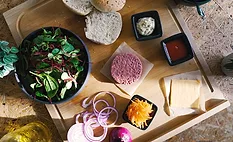
Natural/Organic
Natural and organic products contain no artificial ingredients or added colors, and are minimally processed or processed in a manner that does not fundamentally alter the product.
Articles
More ArticlesNever miss the latest news and trends driving the food safety industry
eNewsletter | Website | eMagazine
JOIN TODAY!Copyright ©2025. All Rights Reserved BNP Media.
Design, CMS, Hosting & Web Development :: ePublishing


